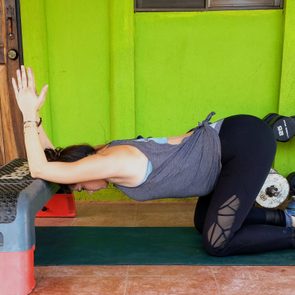5 Tennis Elbow Exercises to Relieve Pain
Updated: Mar. 07, 2022
Wrist-strengthening exercises can help prevent pain related to tennis elbow. They can also help you get back to playing tennis—plus lots of other activities.
Here’s why people need tennis elbow exercises
You don’t have to be a tennis player to suffer from the so-called “tennis elbow.” In fact, this degenerative, inflammatory ailment—which affects the attachment point of the extensor carpi radialis brevis (ECRB) muscle just above your elbow—can sideline practically anyone with significant and progressively worsening pain.
This is because just about everyone uses the muscles of their forearms to extend the wrist when performing daily activities. For instance, typing on a computer or brushing your hair can stress the ECRB (and other) wrist extensor muscles.
So if you find yourself dealing with a nagging pain to the outside of your elbow that increases when you extend your wrist (bend it backward, toward the top of your forearm), you might just be dealing with tennis elbow.
While you should always seek an exact diagnosis from a doctor or physical therapist to determine the best course of treatment, it will typically include stretching exercises to help alleviate the inflammation before implementing strengthening exercises to help prevent increasing or returning pain.
(Start your tennis elbow program with these tennis elbow stretches.)
How strengthening your forearms can help tennis elbow
Generally speaking, overuse injuries like tennis elbow occur due to a lack of strength in the affected muscle groups. Tennis elbow, specifically, involves inflammation and degeneration of the attachment point of the ECRB muscle at the elbow (just above the joint).
This tendinous attachment point becomes inflamed, and left untreated, the attachment point starts wearing away, leading to gradually more progressive pain and a reduction in grip strength.
The thing is, strong muscles help reduce the wear and tear at the joints by supporting movement and preventing excessive strain placed specifically on the attachment points themselves.
With weaker muscles, the stronger tendinous attachments take on more of the (completely normal) stress that’s placed on muscles and joints during movement. This is why strengthening exercises are a critical step in helping prevent and alleviate tennis elbow pain (and similar injuries).
“Physical therapy is an extremely important part of treatment for tennis elbow,” says Brian Lee, MD, an orthopedic surgeon at Cedars-Sinai Kerlan-Jobe Institute in Los Angeles.
“As inflammation calms down, strengthening exercises of the forearm and the ECRB should be performed to protect against future injury. Doing so helps patients return to the activities they were participating in which incited the tennis elbow.”
Strengthening tennis elbow exercises
Although forearm stretches and exercises may not be a mainstay in your workout program, strong forearms are essential for daily movements of the wrist, fingers, and elbow.
Alissa Tucker, a master trainer for the AKT fitness brand, suggests the following exercises to strengthen the forearm and help prevent tennis elbow pain.
Wrist curls
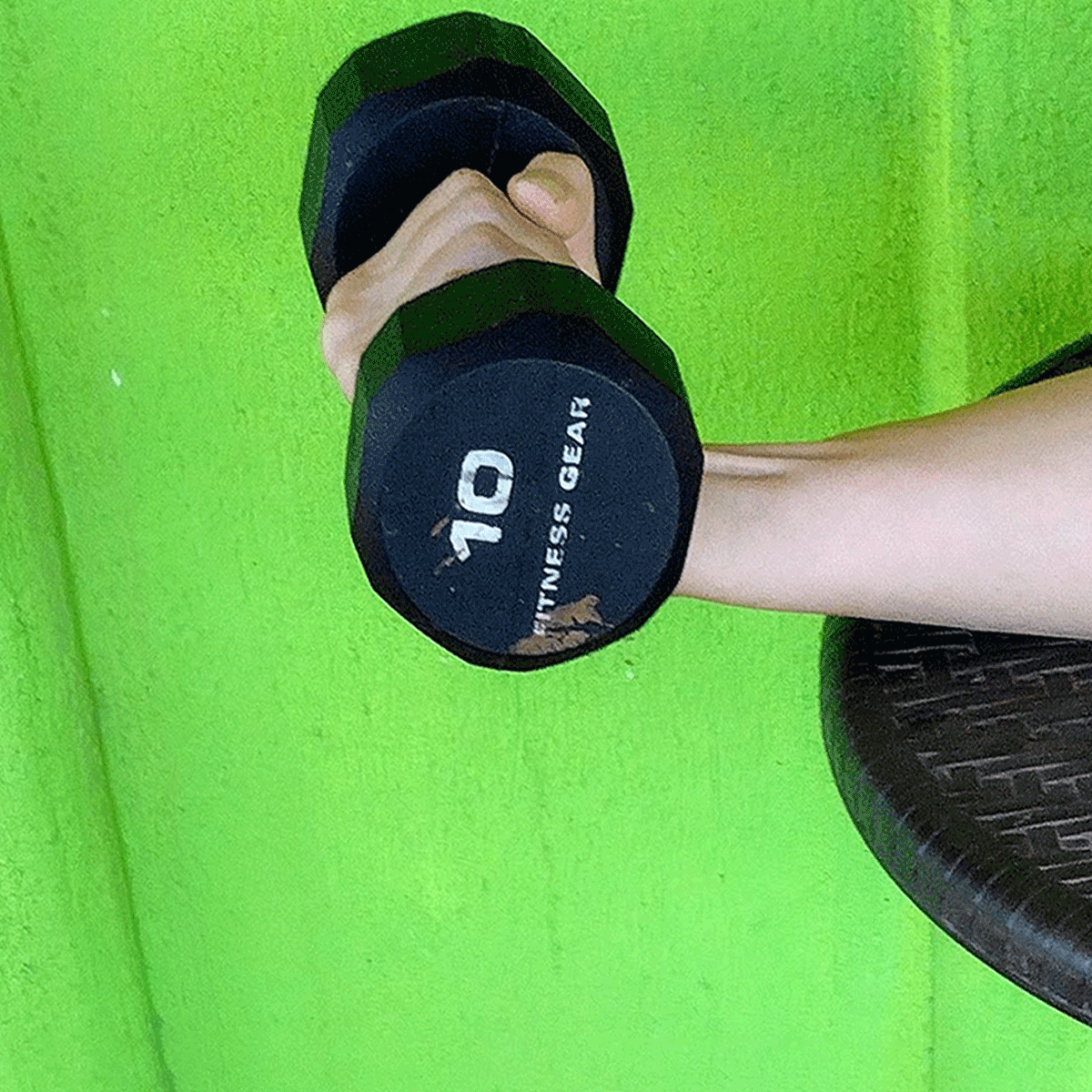
Tennis elbow involves inflammation of the wrist extensors, but if all you do is strengthen your extensors, your wrist flexors may end up with an imbalance. In addition to exercises that specifically strengthen the extensors, you’ll want to perform exercises for the flexors, too. Standard wrist curls help strengthen the wrist flexors of your forearm.
Hold a light dumbbell in your right hand (start with 3 to 5 pounds). Place your right forearm on a table or desk so your palm is facing up and your wrist is extended over the edge of the table—your wrist should be straight. Lower the dumbbell toward the floor, extending your wrist, then reverse the movement and curl the dumbbell up as high as you can without moving your forearm. Perform three sets of 10 to 12 reps before switching sides.
(Alleviate carpal tunnel pain with these treatments.)
Reverse wrist curls
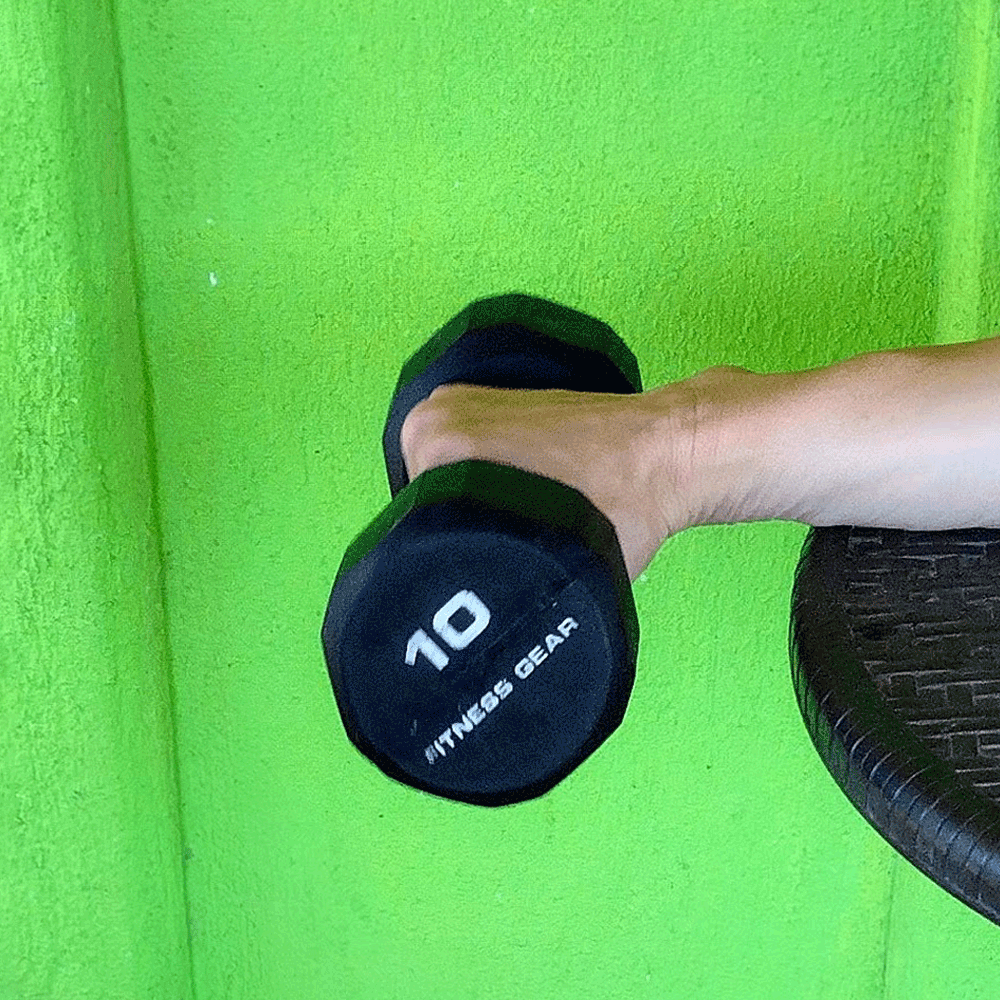
Reverse wrist curls are one of the main movements for strengthening your wrist extensors, and specifically the ECRB muscle. Depending on where you are in physical therapy, you may start performing this exercise without a dumbbell, simply working on the movement without added resistance.
Hold a light dumbbell in your right hand (if using resistance, start with 1 to 5 pounds). Place your right forearm on a table or desk with your palm facing down, your wrist extended just over the edge of the desk—your wrist should be straight. Lower the dumbbell toward the floor, flexing your wrist, then reverse the movement and curl the dumbbell up as high as you can (performing a wrist extension) without moving your forearm. Perform three sets of 10 to 12 reps before switching sides.
Dumbbell twists
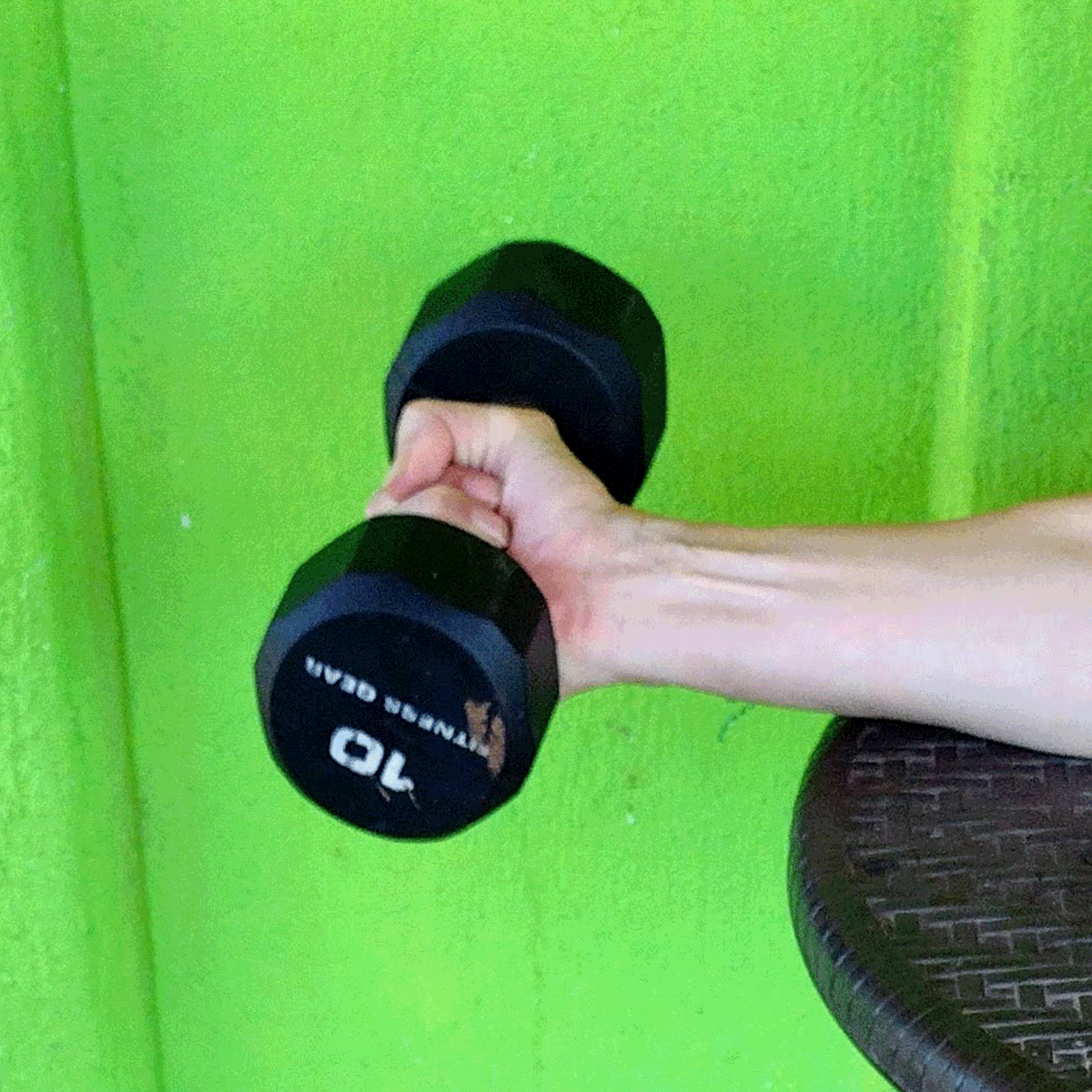
You’re probably aware the wrist performs more movements than simply bending and extending. You can also twist your wrist and move it side to side. These movements require wrist muscle coordination (either contracting to perform the movement, or relaxing to allow the movement), which makes strengthening all of them important. Dumbbell twists help strengthen the pronator and supinator muscles of your wrists that support the twisting action.
Sit tall in a chair, your feet planted shoulder-distance apart. Hold the end of a light dumbbell (start with 1 to 3 pounds) in your right hand. Lean forward and place your right elbow on your right knee, your arm and leg aligned, with your palm facing up. Twist your right hand, turning it until your palm faces down. Hold for a moment, then twist back to the original position. Perform three sets of 10 to 12 repetitions before switching sides.
(Try these 14 upper-body dumbbell exercises.)
Towel twist
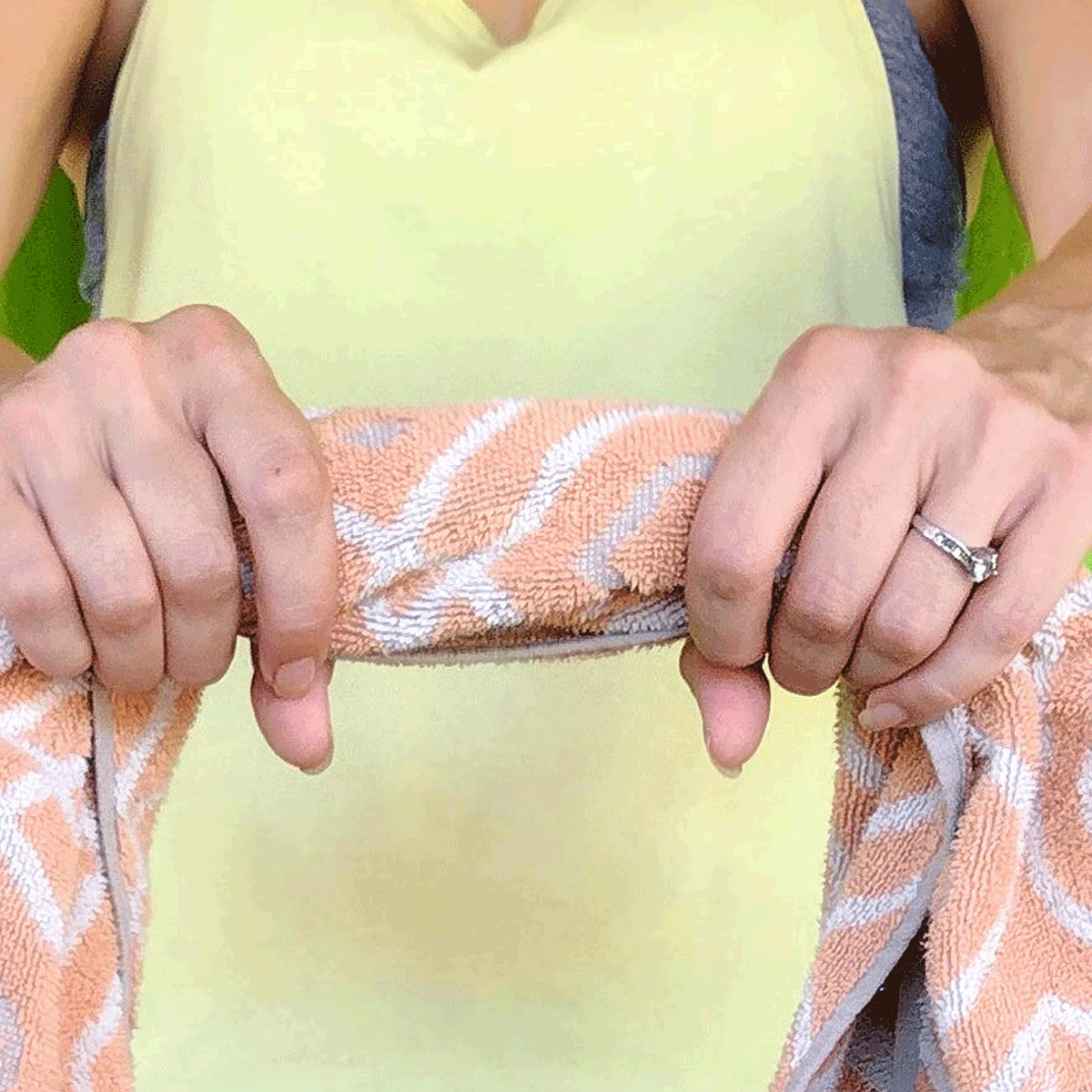
The towel twist simultaneously works your flexors and extensors in a coordinated (and fairly common) action. It’s simple: You’re essentially “wringing out” a towel, but intentionally contracting your forearm muscles as you do so.
Sit tall in a chair with your feet hip-distance apart, feet flat on the ground. Grip a smallish towel (like a dish towel or hand towel) in both hands with your palms facing down, allowing a few inches of space between your hands. Holding the towel comfortably in front of you (elbows bent, if desired), extend your left wrist up as you flex your right wrist down in a coordinated action, actively contracting the necessary forearm muscles. Squeeze for a second, then reverse the movement, flexing your left wrist as you extend your right wrist. Perform three sets of 10 to 12 repetitions total.
(These 4 forearm stretches can help improve wrist pain.)
Sock squeeze
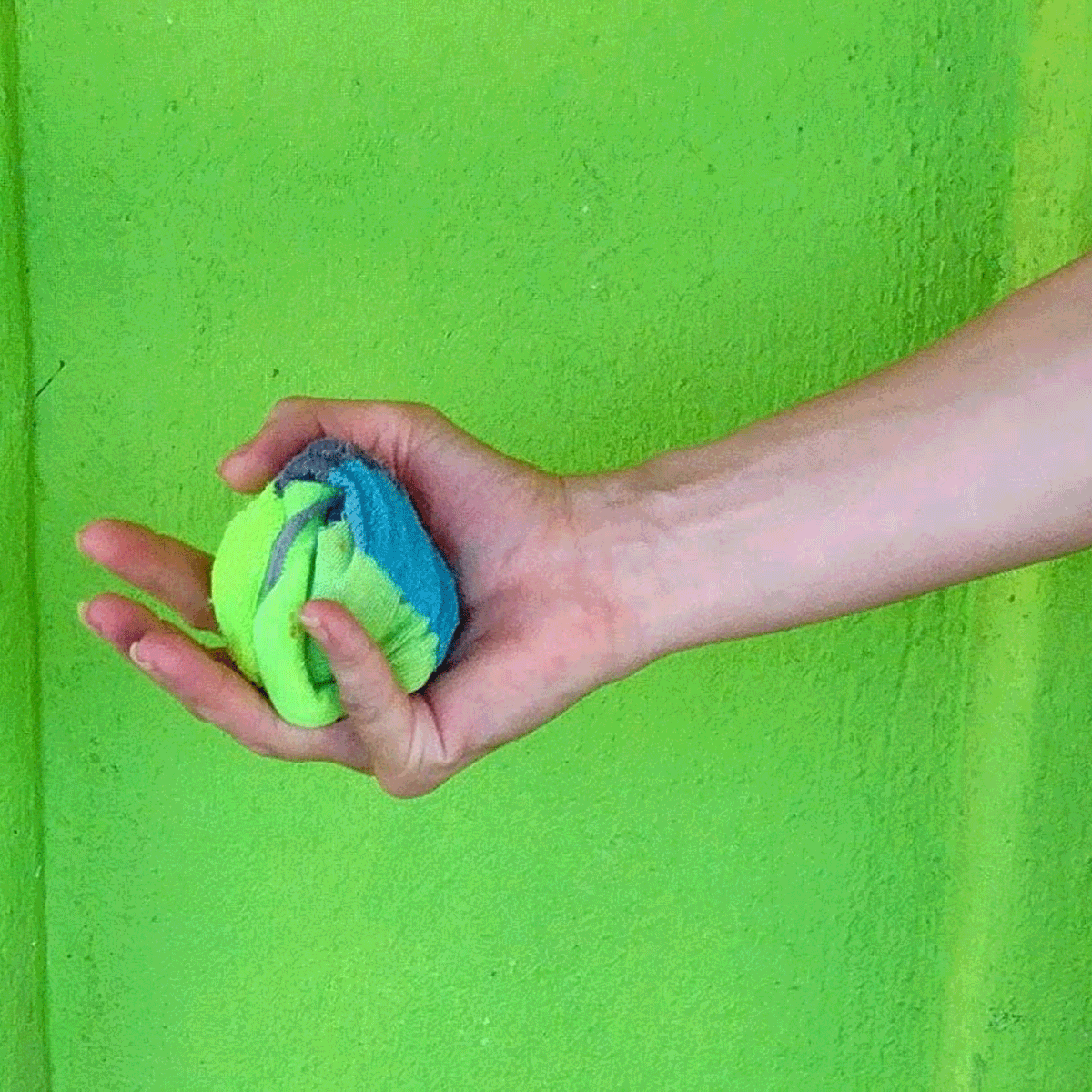
Because the ECRB muscle originates above the elbow and inserts itself at the base of your middle finger, weakness or pain of the ECRB muscle can affect your grip strength. The sock squeeze helps strengthen your grip, using the muscles of your forearms and fingers to perform the coordinated action.
Hold a pair of balled-up socks in your right fist. Squeeze as tightly as you can for roughly five seconds, then relax for 10 seconds. Repeat 10 to 12 times on one side before switching hands. Start with a single set, and as you get stronger, add one to two more sets.
(What you need to know about arthritis.)
Next, address your rounded shoulders with these exercises.




















